Celebrating the Birthday of Sir Edward Coley Burne-Jones
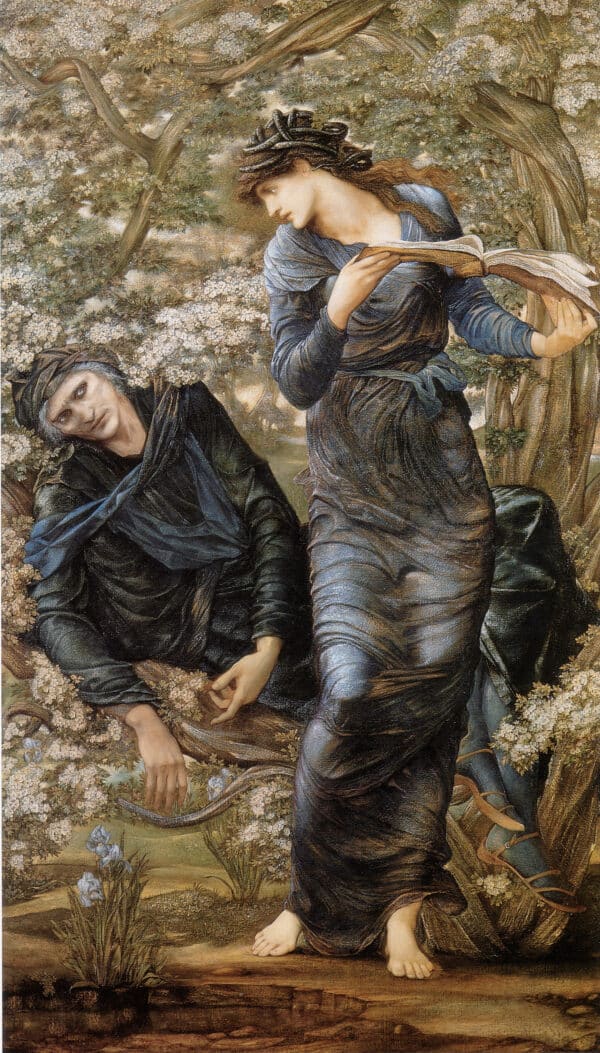
The Beguiling of Merlin, Oil on Canvas, 1872-1877
Today we are celebrating the birthday of Sir Edward Coley Burne-Jones, a British artist born in Birmingham on the 28th of August 1833 and who died in June 1898. Burne-Jones is a fascinating figure in British Art History. Frequently regarded as the last of the Pre-Raphaelite Brotherhood, he was also a significant part of the Aesthetic and Art & Crafts movements in Victorian England.
Burne-Jones’ creative abilities were not limited to painting. He was an illustrator, a designer, a dreamer, a storyteller, a lover and so much more. Described by his biographer, Fiona MacCarthy, as ‘maddeningly evasive’, Burne-Jones was a man hard to pin down and difficult to define.
Considered to be ‘out of fashion’ for many years after his death, at the end of the 20th century interest in Burne-Jones and his work began to reignite. This interest has continued to grow over the last 25 years and he is now understood to be one of the greatest narrative artists to come out of the 19th century.
Theology, Art and William Morris
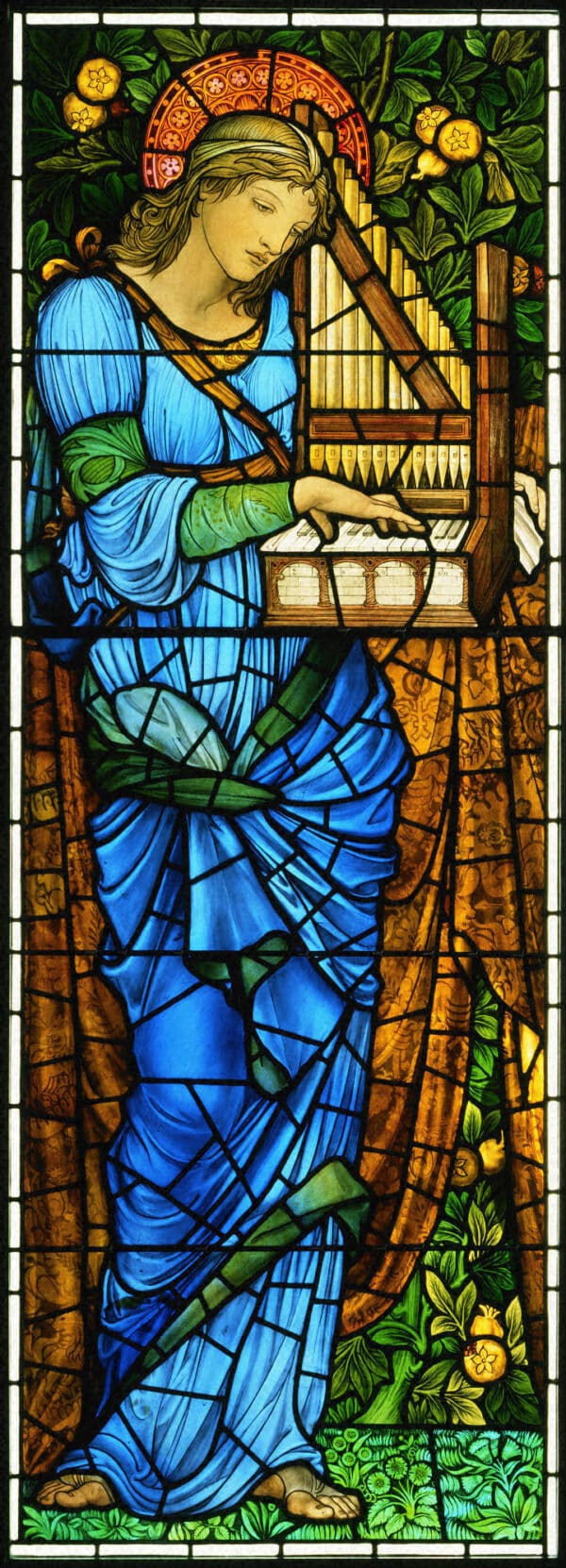
St. Cecilia, Stained Glass, Designed by Burne-Jones, Made by Morris & Co c 1900
Sir Edward Coley Burne-Jones differed from his artistic contemporaries by studying not at an academy for art, but at the University of Oxford. This was due to his original intent of becoming a Christian Minister, an objective which changed during university when he met fellow undergraduate William Morris. Both men shared an interest in art and design, poetry and the medieval period and ended up becoming lifelong friends and colleagues.
They inspired each other, worked together and Burne-Jones was a partner and designer for the celebrated furnishing and arts company Morris & Co, which remains in business today. However, despite their mutual appreciation for the applied arts as well as the fine, their characters differed in social and political aspects.
Morris is known to have been an activist for socialism, whilst Burne-Jones, a more world weary and romantic thinker, stepped away from public life for many years at a time and avoided political involvement. Most importantly, however, they are figureheads of the Aesthetic and Art & Crafts movements, through which beautifully considered design, inspired by nature, gained more popularity than ever before.
Edward Burne-Jones and the Pre-Raphaelite Brotherhood
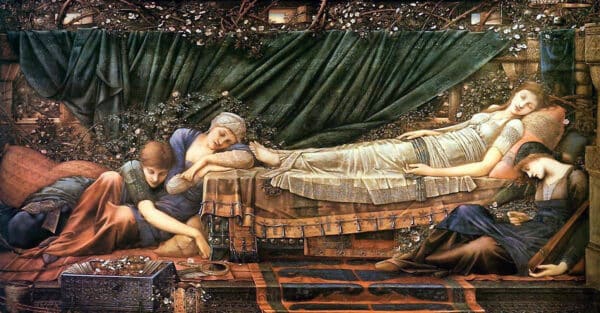
The Rose Bower, Oil on Canvas, Part of The Briar Rose Series at Buscot Park
After Oxford, Burne-Jones moved to London where he became the apprentice of Dante Rosetti, a founding member of the Pre-Raphaelite Brotherhood. Burne-Jones learnt the brotherhoods’ manifesto and gained an affinity for their artistic ideals such as their pursuit of realism. In many of his works, we can see Burne-Jones portray the stereotypically pale, redheaded female figures just like those found in paintings by other Pre-Raphaelites such as Rossetti and Millais.
Burne-Jones’ love for fantasy stories and myth combined with his deep literary knowledge of theology also meant that much of his subject matter was in line with Pre-Raphaelite tropes.
Having said this, Burne-Jones’ work is considered to harbour an enigmatic quality that differed slightly from the intentional symbolism thoughtfully placed within other Pre-Raphaelite compositions. In many of his works there is an air of “strangeness” and of unexplainable matter. This can be seen in “The Golden Stairs”, in which youthful women make their way down steps to who knows where and for who knows why!
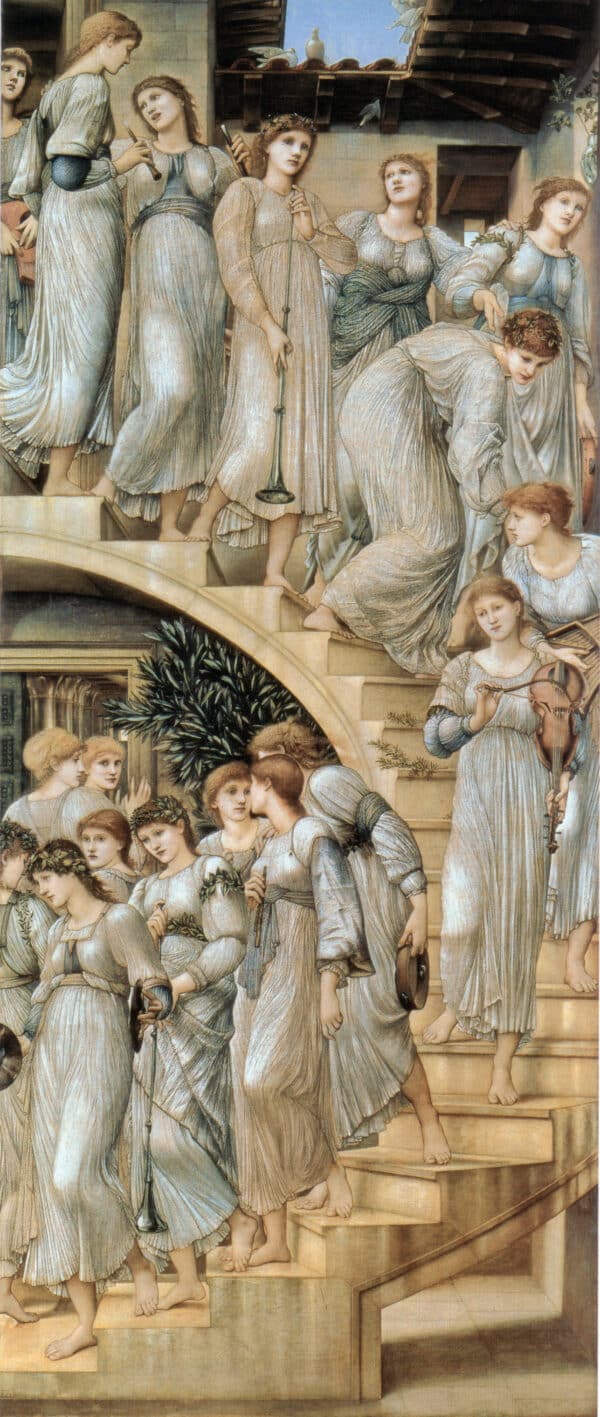
The Golden Stairs, Oil on Canvas, 1880
The Many Talents of Burne-Jones
Sir Edward Coley Burne-Jones was clearly so much more than a painter. His enormous productivity came from his accomplishments in an array of crafts, materials and techniques.
Although Burne-Jones abandoned his ministerial aspirations for art, he is known for his wonderful contributions to many stained glass windows that decorate churches throughout the UK. He was also a talented, somewhat mischievous, illustrator. Frequently embellishing his love letters with erotic drawings or coming up with light-hearted depictions of himself and Morris as a cartoon-esque pair.
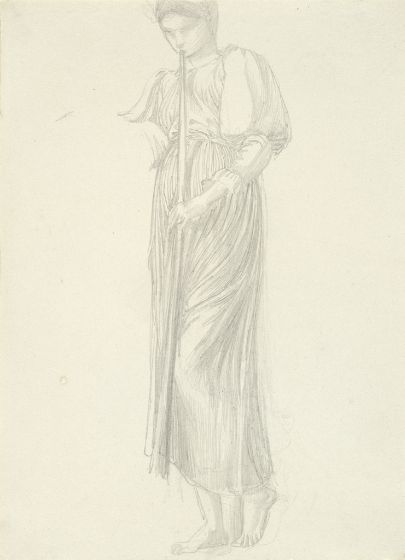
Study for The Golden Stairs
Commissioned to design tapestries, carpets, furniture and more, Burne-Jones also left a huge number of preparatory sketches, drawings and cartoons after his death. This was because of the lengthy process he undertook in planning and mapping out his final works.
Sir Edward Coley Burne-Jones and the Colour Blue
It is documented that on multiple occasions Burne-Jones made it known that he believed the most beautiful colour to exist was the colour blue. We can relate to this!
“I love blue, I think it is the most pure and beautiful colour in all the world, and the most lovely” – Edward Burne-Jones
He was particularly inspired by Piero della Francesco on the multiple trips he made to Italy; Piero having been a master of the colour himself. Throughout Burne-Jones’ oeuvre, rich and ethereal blues can be found draped across the bodies of beautiful maidens in mythical scenes and worn by graceful models in his personification of night time.
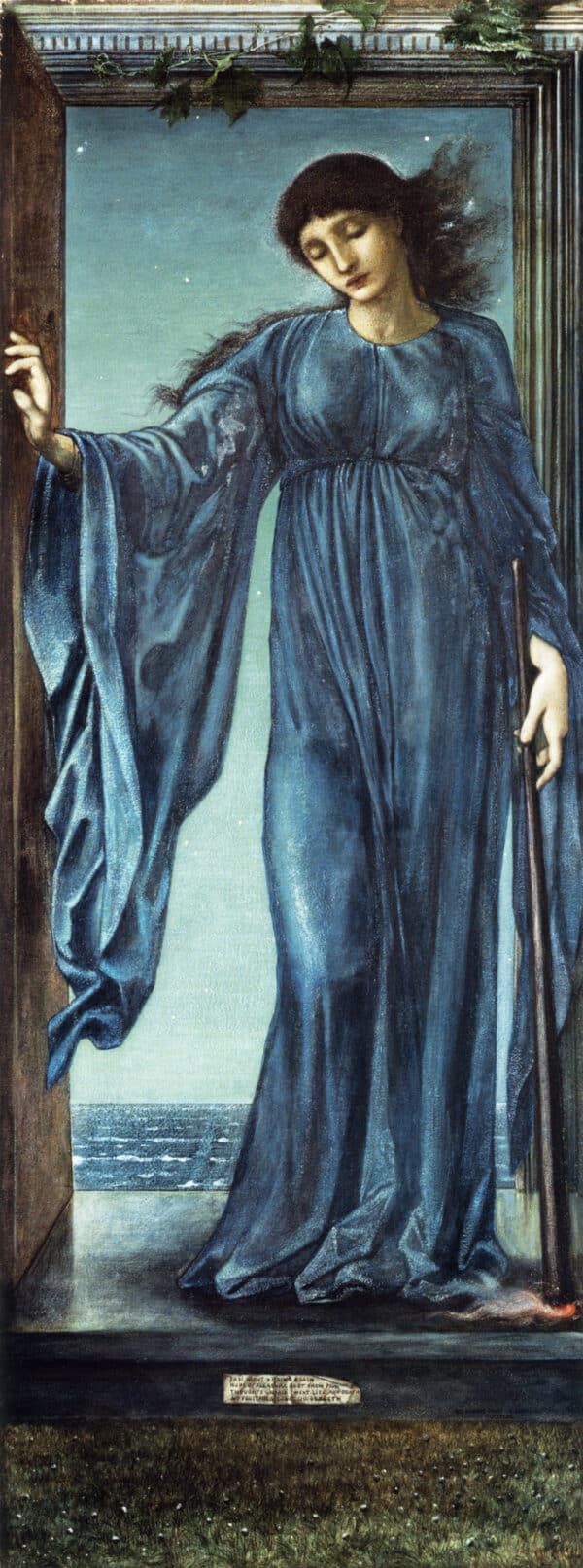
Watercolour and gouache on white paper, 1870
Blue was used in a way that heightened the dreamlike qualities of his compositions. It also emphasised the melancholic questioning of romance, beauty and sexual morality which prevailed as a theme throughout his work. Burne-Jones’ had a complicated relationship with women, his adoration for beautiful females (especially those in high-society) leading to infidelity on numerous occasions.
An Enigmatic Icon
Whilst the life of this great artist may hold its mysteries, even to the most dedicated biographer, it is easy to say that the compositions produced by Burne-Jones in his lifetime are poetry in painted form and staples in British Art History.

Blue & White Company, robe
Here at Blue & White we love the romantic elegance that can be harnessed through a flowing robe or gown and we share a love of the dreamlike qualities that Burne-Jones captured, through the designs of our nightwear collection. We encourage you to take a look at our bespoke nightwear, as you might discover something that takes your ethereal fancy!

Blue & White Company Nightwear Collection, this gown is inspired by a 17th botanical painting